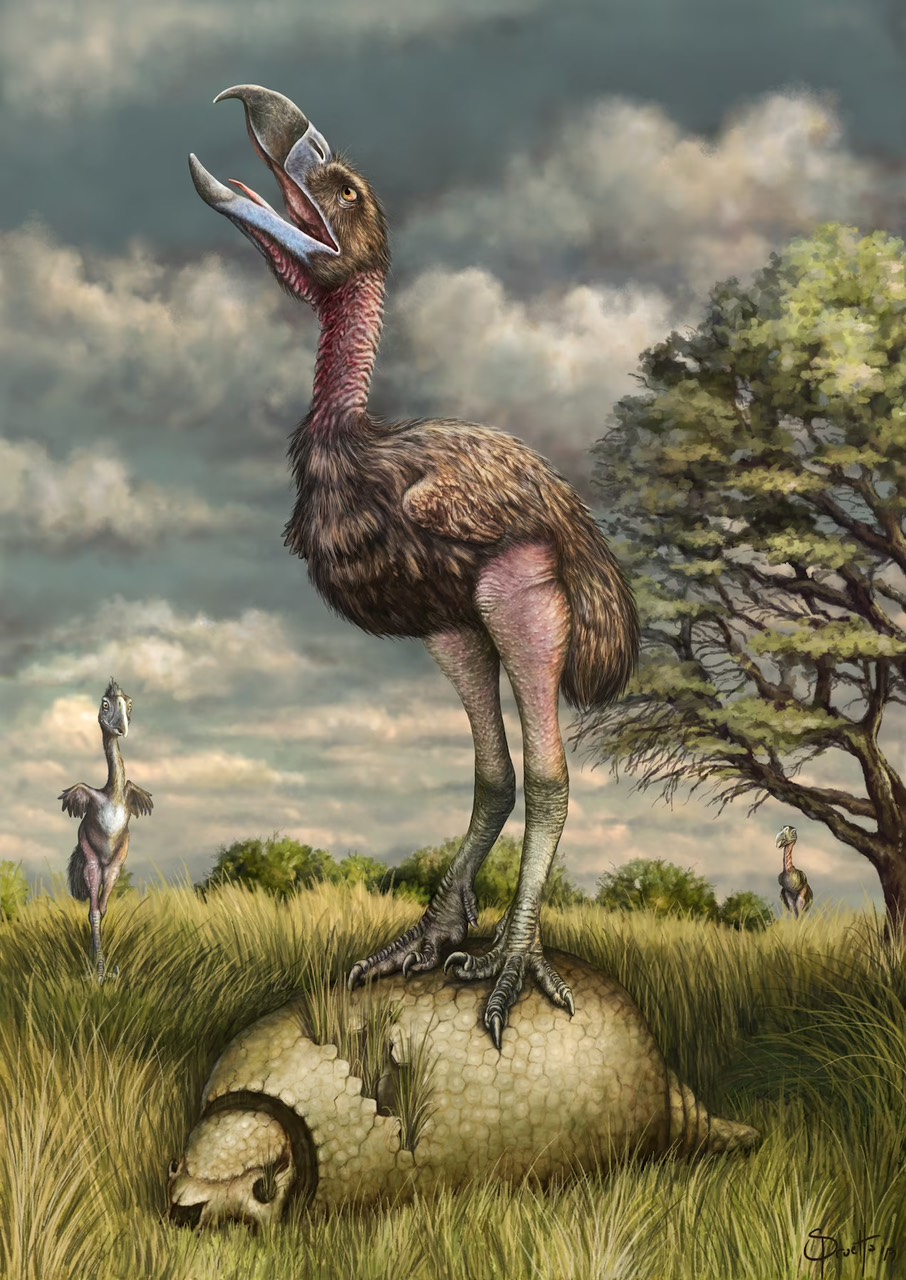
When a large asteroid hit Earth 66 million years ago, not all the dinosaurs went extinct. Birds, feathered dinosaurs that have thrived since the Jurassic, survived—and some of these birds were more terrifyingly dinosaur-like than others.
Between 53 million and 18,000 years ago, carnivores known as terror birds stalked the grasslands of South America. These flightless avians, some of which stood more than 10-feet-tall, strutted over the wide prehistoric planes, chasing down prey and tearing off chunks with deep, hooked beaks.
Now, thanks to newly discovered terror bird footprints, paleontologists have a better idea of how these hunters caught their prey in the first place. The six-million-years-old prints hint that some of these giant birds kicked at their prey and pinned it down, similar to the tactic of earlier dinosaurs like Velociraptor.
The tracks, described recently in Scientific Reports, are the first definitive terror bird footprints. Found along the Atlantic shore in the Río Negro Formation of Patagonian Argentina, they were not easy to spot. The rock layers containing the prints are submerged by the tides twice daily.
“This means that the footprints are being destroyed slowly,” says Ricardo Melchor, lead study author and a paleontologist with the National University of La Pampa in Argentina.
The tracks were first spotted by a reserve ranger named Andres Ulloa, who alerted Melchor to the find. A team of scientists visited the site in 2022, revealing the ancient steps of this fearsome bird.
Precisely what species left the tracks isn’t clear. Multiple of these vicious birds roamed South America during the time, ranging from small species comparable to the modern day seriema—the closest living relative of the terror birds—to giants that stood taller than an ostrich. It could have even been left by a species that is unknown from bones.
Comparisons of the footprints to previously discovered terror bird bones suggest the animal could have been as tall as five and a half feet, a big bird that may have been the juvenile of a larger species.
“I think terror birds are a good inferred trackmaker,” says fossil track expert Lisa Buckley who was not involved in the new study. The impressions match the foot bones of terror birds quite nicely.
Like bones, fossil tracks get their own names. Melchor and colleagues named the tracks Rionegrina pozosaladensis after the geographic and geologic details of where the footprints were found.
A foot for running and snatching
Up until now, paleontologists studying terror bird feet were unsure whether they balanced their weight on three toes or did so on only two, with the third held off the ground. The footprints provide crucial evidence that the animal that left the tracks was balancing on just two digits—a finding that helps confirm these birds ran on two toes and used a third for pinning prey, Buckley says.
Living ostriches walk and run on two-toed feet, and non-avian dinosaurs such as Velociraptor and Deinonychus also famously walked on two toes, holding a third off the ground to keep their wickedly sharp claws undamaged as they moved.
The terror bird tracks show part of a third toe impression near the heel, but the mark left by this digit is much shorter than the other two. The bird put most of its weight on the middle toe, with the outside one acting as support while the inner toe seems to have been held up away from the ground in what experts call a didactyl foot posture.
This posture, the researchers write, complements previous research that suggests terror birds were fast runners. Much like ostriches, they had short thigh bones with elongated bones in the lower leg and foot. The combination creates a shorter recovery time for each part of the running cycle and functionally gives the leg longer reach to take bigger steps.
The terror bird’s foot anatomy also shows similarities to both seriemas, which often catch small reptiles with their feet, and non-avian dinosaurs like Deinonychus. “The tracks are consistent with the idea the animal was an apt runner capable of hunting using this advantage, then pinning down its prey,” Melchor says. The bird likely used its feet to kick at and pin smaller prey, holding the carcass while using the large, hooked beak to rip pieces off. “Potential prey would be relatives of modern capybaras, shorebirds, and juvenile ground sloths,” Melchor says.
Even though some terror birds have been proposed as adept megafauna hunters, the new find changes paleontologists’ perception of what the avians were capable of. “We, as people looking at extinct, large carnivorous beasties, want them to be ferocious predators taking out large herbivores,” Buckley says.
But the tracks hint the longstanding success of the terror birds was underwritten by abundant small prey. “I don’t think a terror bird would turn up its beak at a few rodent or rabbit-sized mammals,” Buckley says, “if it could wrap its claws around them.”


